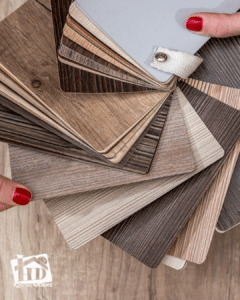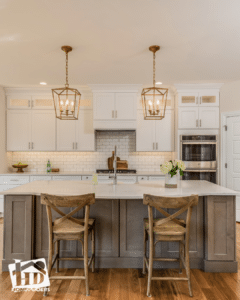In recent years, the allure of home wellness installations like saunas and cold plunges has surged dramatically. Whether fueled by health trends or the increased focus on self-care, more homeowners are choosing to integrate these luxurious amenities into their living spaces. Imagine the convenience of stepping into your own sauna or cold plunge after a long day, all within the comfort of your home. This article delves into the rising popularity of these features, explores their health benefits, and offers inspirational design ideas for incorporating them into various home environments. Let’s discover how you can enhance your wellness routine with these transformative additions.
The Benefits of In-Home Saunas and Cold Plunges
Health and Wellness Advantages
Regular use of saunas and cold plunges has been linked to numerous health benefits. Saunas, particularly, are renowned for enhancing circulation, easing muscle pain, improving joint movement, and reducing stress levels. They are also credited with helping to detoxify the body and improve skin health through deep sweating. Cold plunges, on the other hand, are celebrated for boosting immune response, increasing energy, and enhancing mental clarity. Together, these practices can significantly improve physical and mental health, offering a sanctuary of relaxation right in your own home.
Enhancing Recovery and Mental Health
In addition to physical health benefits, saunas and cold plunges contribute significantly to mental wellness. The heat of a sauna can help alleviate symptoms of anxiety and depression by releasing endorphins—the body’s natural feel-good chemicals. Conversely, the shock of cold water in a cold plunge stimulates the vagus nerve, which controls heart rate and mood, thereby helping to lower stress levels and improve mood.
Importance of Healthcare Oversight
While the health benefits are compelling, it’s important to approach sauna and cold plunge use with caution, especially for those with preexisting health conditions. Consulting with a healthcare provider before beginning any new wellness regimen is crucial. A medical professional can offer personalized advice based on an individual’s health status, ensuring that activities like sauna bathing and cold plunging are done safely and effectively. This oversight is vital to prevent any potential health risks associated with extreme temperatures, such as cardiovascular stress or hypothermia, and to maximize the therapeutic benefits.
By incorporating these practices under the guidance of health professionals, individuals can safely enjoy the myriad benefits, turning their home into a haven for both physical and mental rejuvenation.
Electric vs. Infrared Saunas
Incorporating a sauna into your home requires understanding the different types available and their specific design considerations. Each type of sauna offers unique benefits and requires different setups, impacting the overall design and integration into your home space.
Electric Saunas:
- Heat Source: Traditional electric saunas use a heater powered by electricity to warm the air, which in turn heats the body. This method produces a high temperature and low humidity environment ideal for deep sweating.
- Design Needs: Electric saunas require proper insulation and ventilation to manage the heat and ensure safety. They often need a larger space due to the size of the heaters and the need to distribute heat evenly.
Infrared Saunas:
- Heat Source: Infrared saunas use infrared heaters to emit light that directly warms your body without significantly increasing the air temperature. This type of sauna provides a milder experience, which can be more comfortable for extended sessions.
- Design Flexibility: Infrared saunas can be smaller and more adaptable to tight spaces since they do not require extensive ventilation systems. Their design allows for easier installation in areas like bathrooms or master bedrooms.
Designing for Specific Needs and Spaces
- Integrated Home Spa: For those with ample space, designing a sauna as part of a larger home spa can create a luxurious wellness retreat. Consider adjacent cold plunges or steam rooms for a complete spa experience.
- Standalone Structures: Outdoor saunas can be built as separate structures on your property. This option allows for larger, more traditional sauna experiences and can be a striking garden feature.
- Compact Solutions: For homes with limited space, consider converting a portion of a bathroom or closet into an infrared sauna. These units can be customized to fit into existing rooms without extensive remodeling.
Understanding the different types of saunas and their specific requirements is crucial for choosing the right option that fits your home’s design and your personal wellness goals. Whether you opt for the robust heat of an electric sauna or the gentle warmth of an infrared model, proper planning and design will ensure your home sauna enhances both your property’s value and your quality of life.
Key Features and Materials in Sauna Design
Designing a sauna involves careful consideration of materials and features that ensure functionality, durability, and aesthetic appeal. The right choices can greatly enhance the sauna experience, making it a cherished part of your home wellness routine.
Sauna Materials
- Wood Selection: Traditional saunas are predominantly constructed from softwoods that resist cracking and splitting at high temperatures. Cedar, hemlock, and spruce are popular choices due to their natural resistance to moisture and their ability to give off a pleasant aroma when heated.
- Insulation and Vapor Barriers: Proper insulation is crucial to maintain heat efficiency and safety. Using fiberglass insulation along with a vapor barrier helps prevent moisture from damaging the sauna’s structure and the surrounding areas of your home.
Sauna Interior Features
- Benches: Ergonomically designed benches are essential for comfort and safety in a sauna. Cedar is often used for bench construction because it remains relatively cool compared to other woods and doesn’t absorb heat.
- Flooring: Non-slip, heat-resistant flooring materials like tile or cedar slats are ideal for sauna floors. They should be easy to clean and resistant to moisture buildup.
- Doors: Sauna doors generally include a window to allow light while retaining heat and should open outward to prevent being blocked by an unconscious person, enhancing safety.
Lighting and Accessories
- Lighting: Soft, ambient lighting is preferred in saunas to promote relaxation. LED lights are often used because they emit little heat.
- Accessories: Adding elements like headrests, backrests, and essential oil diffusers can enrich the sauna experience, making it more enjoyable and therapeutic.
By choosing the right materials and incorporating thoughtful features into your sauna design, you can create a safe, comfortable, and inviting space that enhances your home’s wellness capabilities. Each element should contribute to a cohesive and serene environment that encourages relaxation and health benefits.
Integrating Cold Plunges into Home Design
Incorporating a cold plunge into your home wellness area requires careful planning to ensure functionality and enhance the user experience. Here are key considerations for installing cold plunges in various home settings:
Ideal Locations for Cold Plunges
- Spa or Gym Areas: Placing cold plunges in designated wellness spaces allows for easy transition between hot saunas or steam rooms and the refreshing cold plunge, optimizing the therapeutic cycle.
- Bathrooms: Integrating a cold plunge in larger bathrooms can create a private, spa-like environment at home. Ensure the bathroom has adequate drainage and water-resistant materials.
- Outdoors: Outdoor cold plunges can be invigorating and scenic. They require robust construction to withstand weather conditions and should be easily accessible from the house.
Design Features and Construction
- Drainage and Waterproofing: Proper drainage is crucial to prevent water damage and maintain hygiene. Waterproofing all surrounding materials will extend the longevity and safety of the installation.
- Surrounding Materials: Use materials that complement the cold plunge while ensuring they are slip-resistant and durable. Natural stone or textured tiles can enhance aesthetics while providing practical benefits.
Thoughtful design and strategic placement of cold plunges can significantly elevate the wellness experience, providing a convenient and luxurious way to boost health right in your own home.
Outdoor Saunas and Cold Plunges
Considerations for Outdoor Installations
- Weather Resistance: It’s crucial to select materials that can withstand local weather conditions. For saunas, use weather-resistant woods like cedar or redwood that also offer natural insulation. For cold plunges, durable materials such as stainless steel or fiberglass are ideal for longevity.
- Privacy and Accessibility: Ensure that your outdoor wellness spaces are positioned for privacy while remaining easily accessible from the main house. Strategic placement can enhance the usability and enjoyment of these features.
- Integration with Landscaping: Design your sauna and cold plunge to complement your garden or backyard landscape. Consider adding decking, stepping stones, or privacy screens to create a cohesive and inviting outdoor retreat.
Professional Installation
Companies like Compass Exteriors can help design and install outdoor saunas and cold plunges that are not only functional and beautiful but also compliant with local building codes. Their expertise ensures a seamless integration into your outdoor living space, enhancing your property’s value and your lifestyle.
Creating an outdoor sauna or cold plunge requires thoughtful planning and professional execution to maximize the enjoyment and health benefits of these wellness features, making them a valuable addition to any home.
Why Choose Honey-Doers for Your Wellness Project
When planning to integrate a sauna or cold plunge into your home, selecting the right contractor is paramount. Honey-Doers stands out with extensive experience in designing and installing custom spa and bathroom remodels. We understand the nuances of creating spaces that are not only aesthetically pleasing but also functional and compliant with all safety standards.




